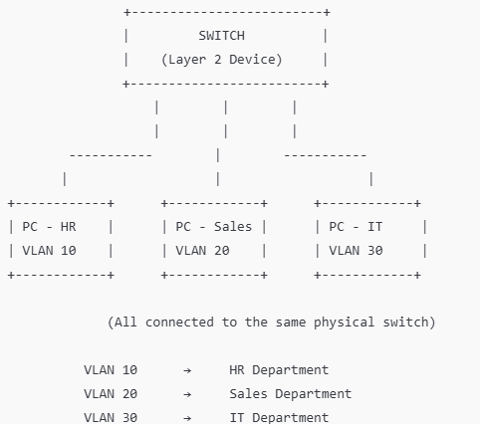"What is VLAN?
A Beginner’s Guide to Virtual LANs in Networking"
6/7/20251 min read
In a traditional network, all devices connected to a switch are part of the same broadcast domain. That means when one device sends a broadcast, every other device receives it — even if they don't need it. This causes unnecessary traffic, poor security, and zero segmentation. That's where VLANs (Virtual Local Area Networks) come into play.
What is a VLAN?
A VLAN is a way to logically divide a single physical network into multiple isolated broadcast domains.
In simple words: VLAN allows you to group devices logically instead of physically, even if they are connected to the same switch.
Why Use VLANs?
Improved Security: Devices in different VLANs can’t talk to each other by default.
Reduced Broadcast Traffic: Each VLAN has its own broadcast domain.
Better Performance: Less unnecessary traffic improves network efficiency.
Easier Management: Group users by department (HR, Sales, IT) regardless of location.
Scalability: Easier to expand networks in large organizations.
Real-Life Example of VLAN Use
Suppose an office has three departments:
HR (VLAN 10)
Sales (VLAN 20)
IT (VLAN 30)
Even if all computers are plugged into the same switch, VLAN configuration ensures:
HR can’t see Sales’ traffic.
IT can monitor and manage their own network separately.
You save on buying extra switches.
Types of VLAN Ports
Access Port:
Assigned to a single VLAN.
Used to connect end devices like PCs, printers.
Example:
switchport mode access
switchport access vlan 10
Trunk Port:
Carries traffic for multiple VLANs between switches.
Used between switch-to-switch or switch-to-router links.
Example:
switchport mode trunk
switchport trunk allowed vlan 10,20,30

